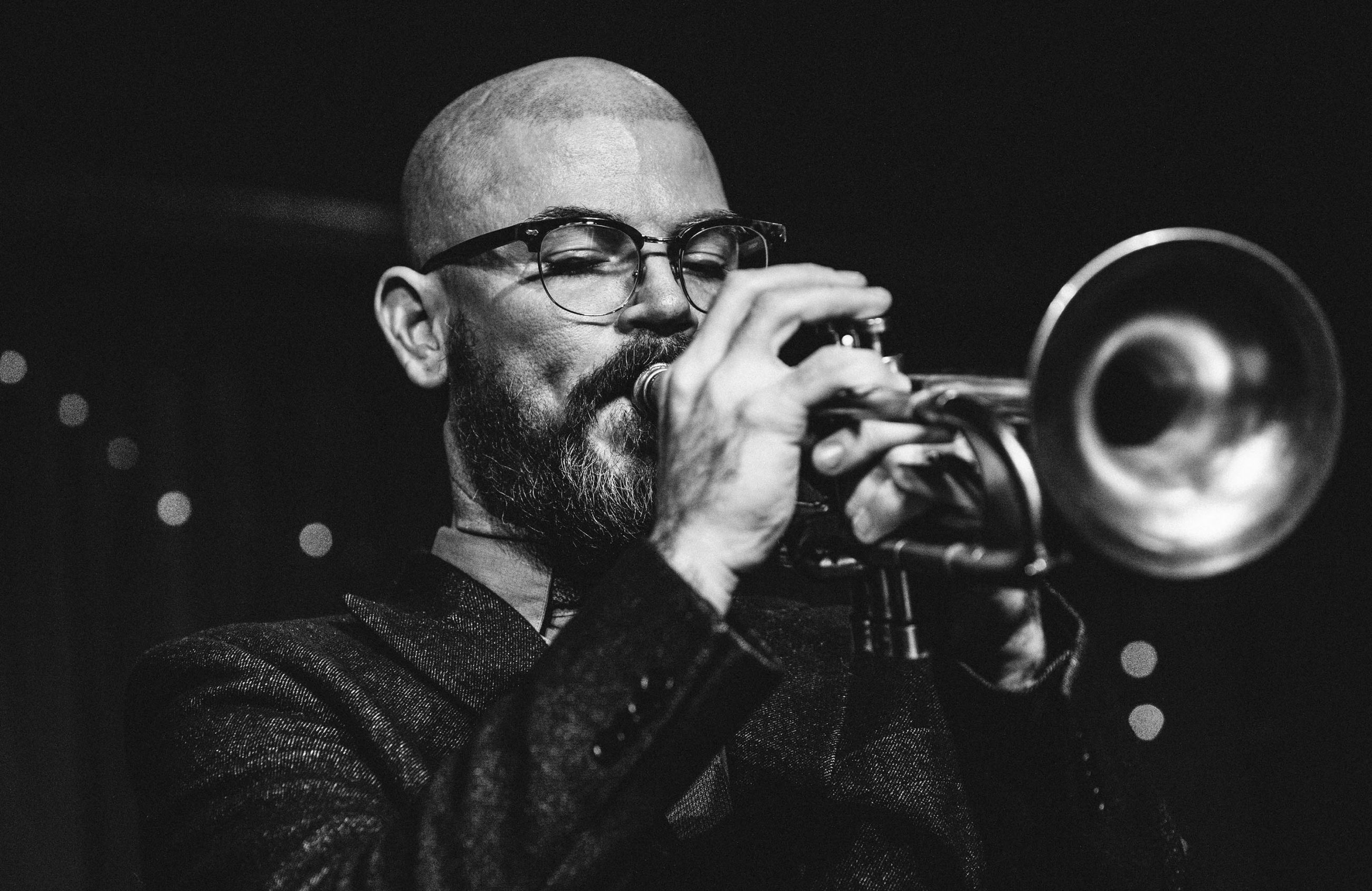On a Friday night, I watch as five musicians take the stage at the newly reconstructed Jaqua Concert Hall at the John G. Shedd Institute for the Arts. As the bassist plucks a few notes, the piano, saxophones and drums join in and flood the concert hall with the momentum of a train leaving a station. The song is “Nostalgia in Times Square” by Charles Mingus and if you’ve set foot in New York City, you can hear the song’s resemblance to the center of one of the busiest spots in the world.
All the instruments begin to quiet as each musician performs a solo, but the lenient humming of the background notes amplifies the song. This song sounds precisely like Times Square capturing the subway galloping below the grates on the sidewalk, taxi brakes squealing, traffic patrol whistles blowing, car horns erratically honking and thousands of feet shuffling. For me, jazz is transformative, chaotic and beautiful.
The Carl Woideck Jazz Heritage Project: Remembering Charles Mingus show is hosted and organized by saxophonist, author, professor, music historian and public radio music host Carl Woideck.
Enlarge
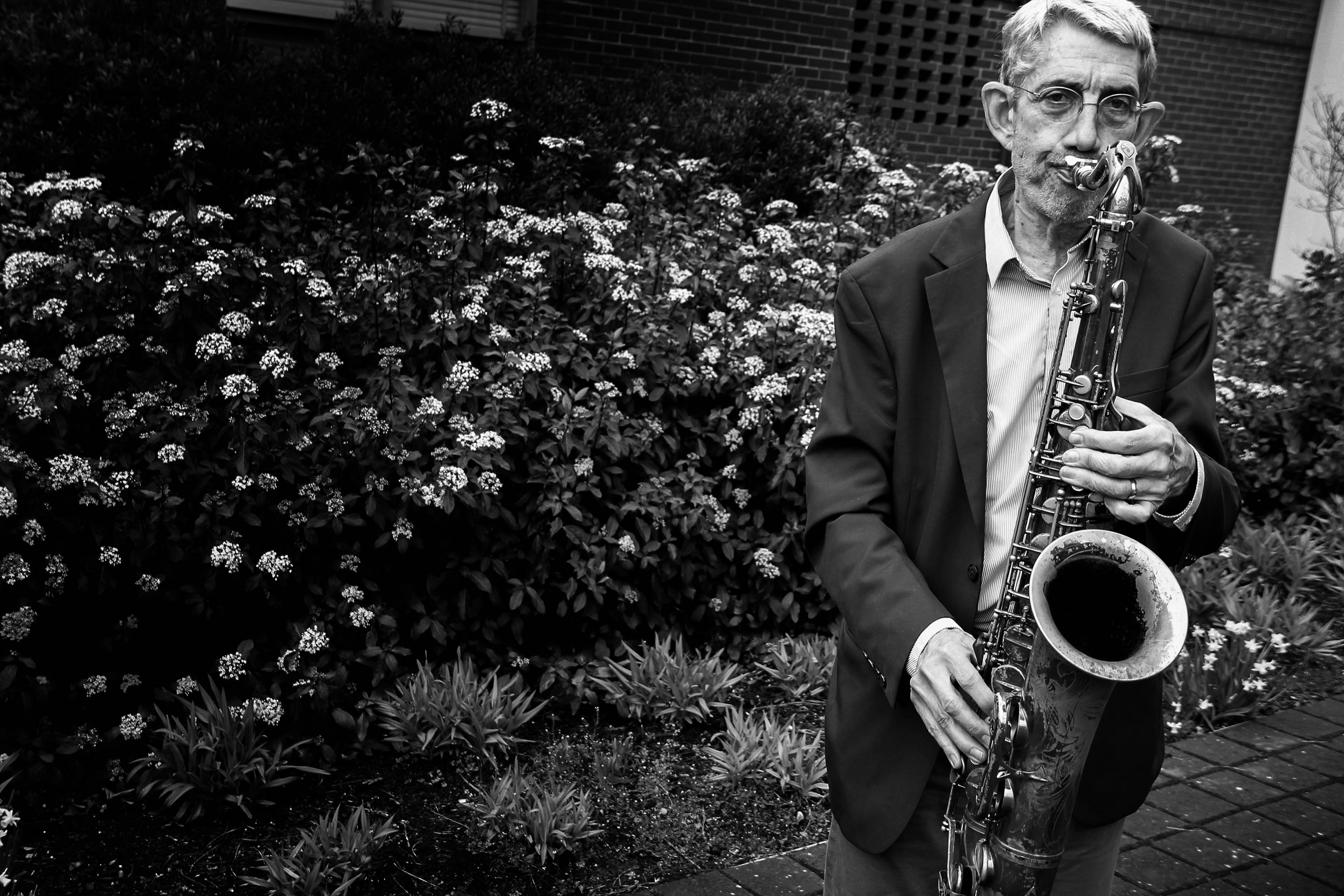
Photo by Erin Zysett
The band plays Mingus’ “Better Get it in Your Soul.” Woideck tells the audience that many of Mingus’ songs have a backstory, and this song was heavily inspired by gospel. Woideck tells the story behind every song. Mingus composed “Jelly Roll” based on early jazz musician Jelly Roll Morton. Mingus learned about Morton in elementary school, and the song, though released in 1959, sounds like a lively ’20s tune.
Woideck is a mainstay in the Eugene jazz community. On a Wednesday night, some days after The Shedd show, I join him as he sits behind a microphone at Eugene’s local NPR affiliate, KLCC, and loads CDs just before he goes on air to host the “Soul of Jazz.” Since 1975, Woideck has contributed historical tidbits about jazz musicians to the community, and his playlist isn’t limited to classic jazz greats.
A jazz aficionado myself, I became curious about how, despite Eugene’s relatively small population, the jazz scene is vibrant. It’s composed of high school students, professors, local professionals and international acts. And it draws musicians from all over the world who stop to play shows in Eugene, where audiences fill living rooms and small clubs and venues.
‘I like to play stuff from all eras,’ he tells me. ‘Here’s Cannonball — I consider that bluesy as hell,’ he says as saxophonist Cannonball Adderley’s ‘St. Louis Blues’ begins to play and horns fill the studio. ‘Oh yeah. Cannonball had it all; he could wail like a blues singer or testify like a preacher. He could also play a tender ballad or swing like crazy,’ Woideck says.
Jazz pianist Torrey Newhart plays piano during the Mingus tribute. He began playing violin when he was four, but he says he didn’t take it seriously until high school. He completed the jazz studies undergraduate and graduate program at the University of Oregon. Now he is an adjunct at UO, a high school teacher and a member of several bands.
“The area that I’m really focusing on a lot right now is the group Inner Limits — it’s a trio so I’m playing bass synthesizer and keyboards. We’re doing a lot of classic rock covers in addition to originals, and we’re adding back up vocals,” Newhart says.
Enlarge
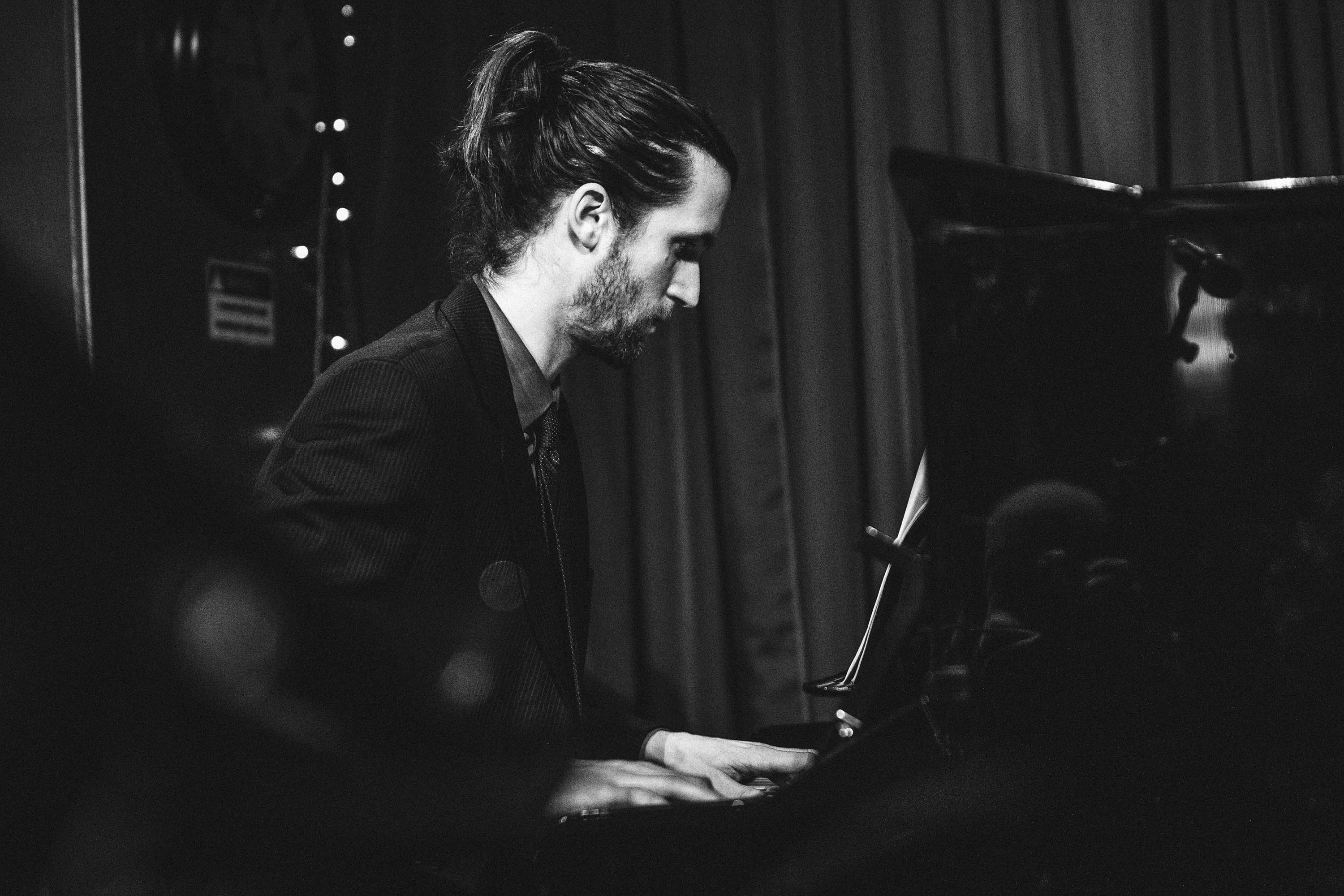
Photo by Todd Cooper
Newhart is part of a core group of musicians that plays multiple venues throughout Eugene, from The Jazz Station, to restaurants, bars and places like The Shedd and house concerts.
Paul Bowdin retired as a public school teacher 14 years ago and, a few years later, reenrolled in school himself — in that same jazz studies program at the UO. There he began meeting musicians. “My wife and I after a while started connecting with a number of musicians who were local here, and some of them in fact went to places like New York City and have become very successful musicians,” Bowdin says.
“After a couple years of studying at the UO, we started using our living room as a venue for local jazz combos out of the University of Oregon,” he says, adding that it was quickly successful.
Bowdin says people outside the UO music community began contacting him, even musicians touring from overseas, and in 2009 the Broadway House Concerts were born.
“Now we’re kind of a mix of local groups and groups from out of town,” he says. “Along with The Jazz Station, which is a great place for listening, there’s us. I think we provide that extra concert style of venue that also has a very intimate acoustic space because it’s in our living room.”
The Bowdins own a 1920s house in downtown Eugene, and their living room seats 55, he says.
Central to Eugene’s jazz scene is the nonprofit club, The Jazz Station. The small space, with a maximum seating capacity of 60, hosts musicians from Eugene, Portland and Seattle, as well as international acts. The Willamette Jazz Society operates the club, and WJS President Ted Ledgard says they rely on grants and volunteers to take tickets, serve drinks and assist with the venue in order to pay musicians and rent the space.
“Time and time again bands have said after a performance, ‘Man we love coming here, because your audience is so great,’” Ledgard says. “They really understand what the musicians are trying to do. They listen to the music — it’s like a church in here when there’s a performance. And that’s good.”
The Jazz Station hosts performances paying tribute to the ’40s, ’50s and ’60s, but it’s also home to acts who push the genre, keeping the scene alive, relevant and fresh by incorporating fusions of hip hop and modern jazz.
On a rainy Saturday night, only a few seats were empty at The Jazz Station as the Wes Georgiev Trio took the stage. A high school saxophonist, Georgiev played a number of classic standards and his band didn’t miss a beat.
Enlarge
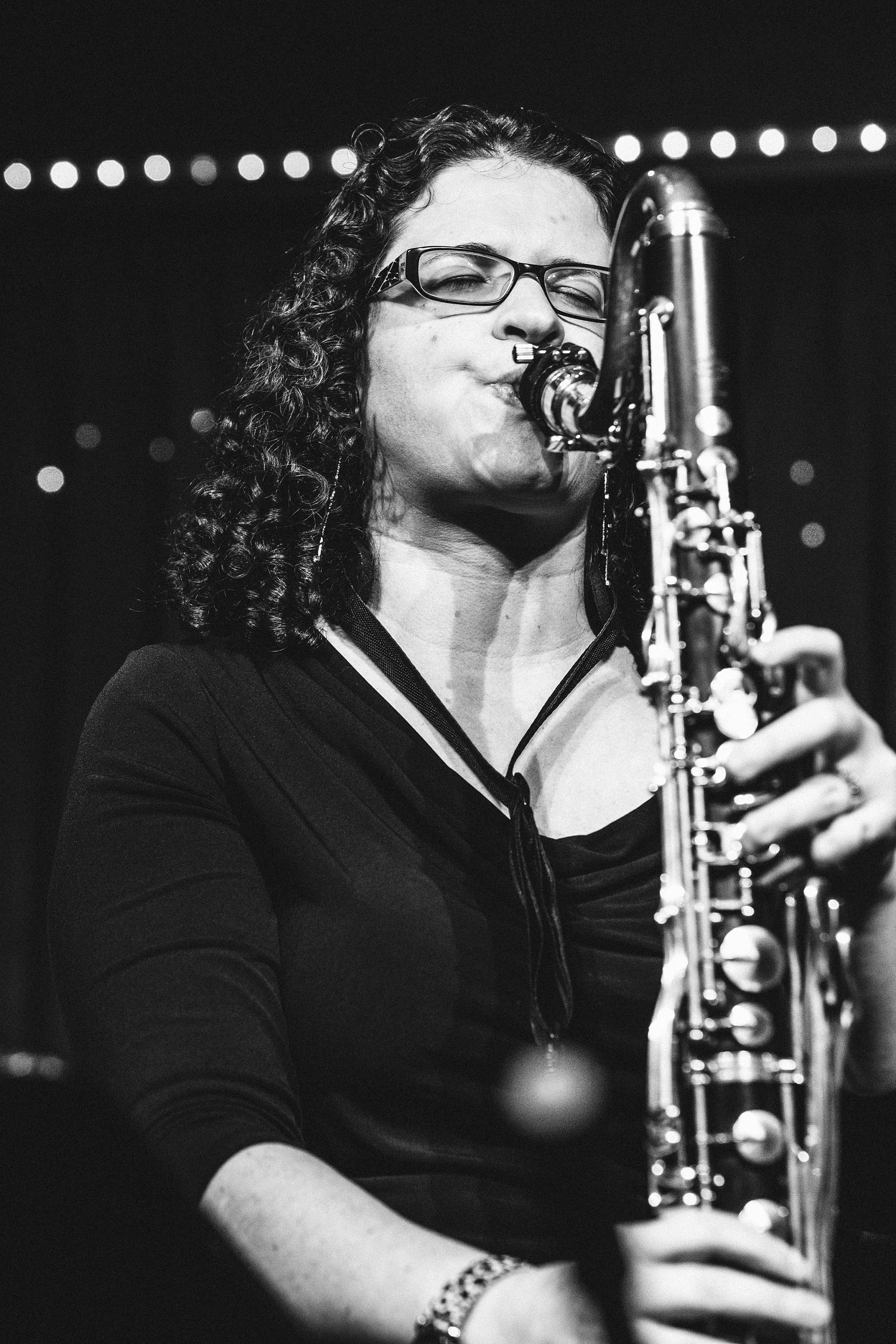
Photo by Todd Cooper
Alto saxophonist Idit Shner played in the Israeli Air Force jazz band before moving to the U.S. in pursuit of her higher education. She earned her doctorate in saxophone performance with jazz studies from the University of North Texas.
Shner says she’s played in a lot of different bands throughout her life, and she averages around 60 to 80 shows per year playing at The Jazz Station and at the Broadway House Concerts. She says the jazz scene in Eugene is distinctive.
“It’s easy to overlook because a lot of people from Oregon are unaware that there are actually people from all over the world living in Eugene,” Shner says. “Right after Hurricane Katrina, we had an influx of a few jazz players who were transplants.” She says a few musicians stayed and played in Eugene for about eight years.
“We have people from Africa and Europe, and we have people who are on the road and tour a lot with national acts, so there are really a lot of different people doing a lot of different things.”
Woideck says there are a handful of things that make the Eugene jazz scene great. “The Jazz Station is the best thing. It’s great to play there because you get paid decently and no one is getting rich. It’s really a pleasure. A lot of Portland people come down and drive four hours to work here because we have this great venue,” he says. “People listen; it’s a pleasant place.”
Woideck is also the author of Charlie Parker: His Music and Life. He was a teenager the first time he heard jazz.
“When I was in high school there was a song that was a hit on the radio, and I found out that it was a jazz song,” Woideck says. “I had no idea what jazz was. I bought the record and on the cover it said jazz, so I just thought, ‘Damn, this sounds really nice.’ You know how it is.”
I do know how it is. I don’t remember the first time I heard Charlie Parker, but I do remember attending a Thelonious Monk celebration in lower Manhattan in 2008. I remember turning down the dial to 88.3, Jazz 88, anytime I switched on my radio in NYC. They played what became my favorites: standards, bebop, Charlie Parker, Dizzy Gillespie, Sonny Stitt, Art Blakey, Miles Davis, John Coltrane, Dexter Gordon and Sonny Rollins.
Enlarge
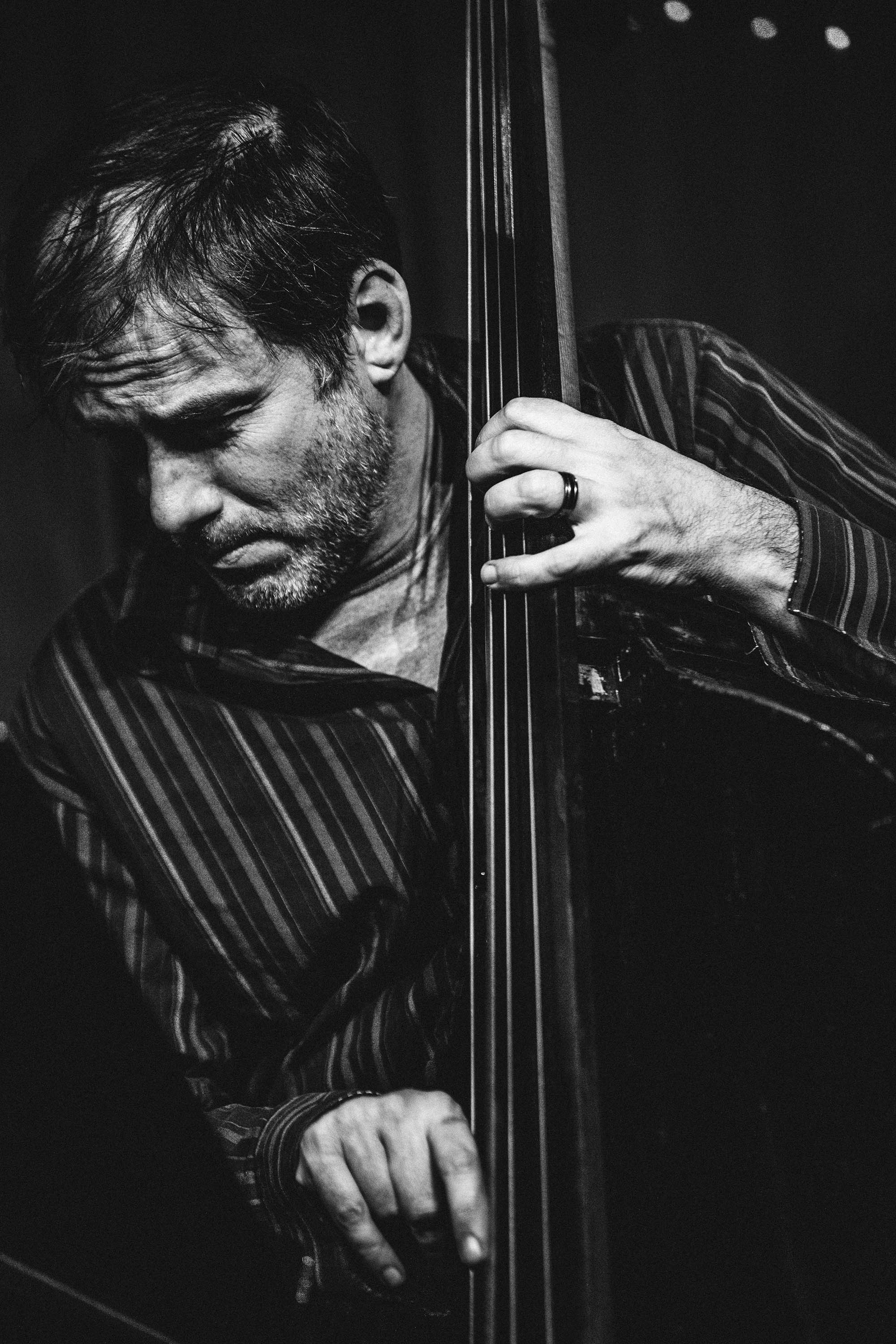
Photo by Todd Cooper
These names were the soundtrack on my daily commute. I crowded around jazz subway performers anytime they caught my ear, and I sought out musicians playing their music on the weekends by scouring the Village Voice for free shows.
Despite growing up in the late ’80s and early ’90s in South Carolina, where my grandparents heavily rotated Motown, Otis Redding, the Drifters, Chubby Checker, Diana Ross and the Supremes and old country music, I didn’t hear jazz played on the radio. Then at 23, I became hooked on these crackly jazz recordings, and newly created Pandora radio deepened my curiosity.
The New York Public Library made these jazz musicians and their stories accessible to me.
Woideck saw Charles Mingus in New York City at the Village Vanguard in 1965 when he was sitting at the bar nursing a beer. “I was at the bar because it was cheaper, and you could stay all night. They didn’t turn you out after the set and make you go out,” he says. “I was at the bar, and Mingus came and stood right next to me.”
The first jazz song he heard was “Desifinado.”
“You know how it is, you go to a show, and they say, ‘This is all Thelonious Monk music’ and then you find some Thelonious Monk and then you find that Thelonious Monk’s saxophone player is John Coltrane, and you think, ‘Well, I’m going to listen to John Coltrane’ — then you find out John Coltrane was influenced by Charlie Parker,” he says.
“Now you’re listening to Charlie Parker and you find out his trumpet player is Miles so it just starts spreading,” he continues. “That was the same thing with me: I heard this thing, and I was told it was jazz and one thing lead to another.”
If students are interested in jazz, many of the shows in Eugene offer discounted tickets. The Jazz Station has student membership discounts, and many of Woideck’s Shedd shows are free for students.
Attracting young people to The Jazz Station shows can be challenging, but Ledgard says that’s changing.
“When I first started coming here, it was a bunch of old goats like me,” he says. “They were into the jazz from the ’50s and ’60s and so on. It kind of depends on the kind of music. Some of the foreign students are much more into our jazz than our American students. Most of the younger American students are listening to the more free [style] kind of jazz.”
As Woideck closes out the Mingus tribute show, he adds additional lyrics to “Original Fables of Faubus,” a song Mingus wrote in 1957 after Arkansas Gov. Orval Faubus ordered the state’s National Guard to block the Little Rock Nine from integrating into a public school, going against the recent U.S. Supreme Court Decision, according to Charles Mingus’ website.
In the song, Mingus sings “Boo! Ku Klux Klan (with your Jim Crow plan).”
Bassist and composer Sean Peterson, who plays regularly with Woideck, adds the lyrics, “No Trump, No Nazis, No Sessions.”
Woideck tells me, “Charles Mingus composed “Fables of Faubus” with a lyric that mercilessly mocked segregationist governor Orval Faubus, Nazis and racial supremacists. Mingus’ then-record company wouldn’t allow him to record the song except as an instrumental. The next year, another record company bravely allowed him to record the piece, scathing lyrics and all.”
Although jazz music comprises around 1 percent of all album sales, Woideck thinks the genre is grounded in Eugene.
“Musicians play to some extent for the love of it,” Woideck says. “Like classical music, jazz is always going to be a small portion of the music marketplace. Its complexities appeal to an audience that’s looking for a high common denominator. It still thrives every night in clubs, concert halls and universities across the world.”
For a list of upcoming jazz shows at the Shedd, The Jazz Station and Broadway House Concerts, visit EW’s music calendar at EugeneWeekly.com.
